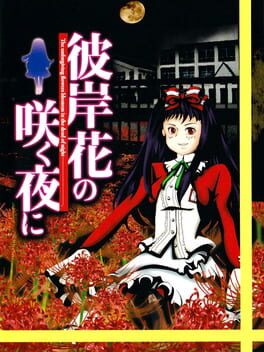Originally made as an attempt for Ryukishi to train himself to work on a short story format.
Due to that, experimental is the word to describe it best, which is truly refreshing after getting used to Ryukishi's ways of building a story with the long long Higurashi and Umineko.
I would have trouble recommending it to anyone who's not super invested in Ryukishi's worldviews and more specifically the constant game of "catch ball"
going on between his previous writings and his next, ever-changing and clashing against each other as they come around with new perspectives to the same issues, specifically within the WTC series.
As a result Higanbana can feel like somewhat of an edgy messy string of stories in standalone when you're not caring much about the other works surrounding it and how they connect thematically to each-other.
While not part of WTC directly, what is said relating to WTC works is where Higanbana was at its most interesting to me, it is much more cruel and dark in its depiction of suffering and their overall resolutions.
The Princess's Lie and Hameln’s Castanets being primary examples for Umineko and Higurashi respectively.
Higanbana is cruel because as its name implies, it is a story of the deads, she nourrishes herself with our repeated failures, there is no warmth to be had for what has failed and will continue to fail,
she will simply always have the last laugh as the cycle continues.
Due to that, experimental is the word to describe it best, which is truly refreshing after getting used to Ryukishi's ways of building a story with the long long Higurashi and Umineko.
I would have trouble recommending it to anyone who's not super invested in Ryukishi's worldviews and more specifically the constant game of "catch ball"
going on between his previous writings and his next, ever-changing and clashing against each other as they come around with new perspectives to the same issues, specifically within the WTC series.
As a result Higanbana can feel like somewhat of an edgy messy string of stories in standalone when you're not caring much about the other works surrounding it and how they connect thematically to each-other.
While not part of WTC directly, what is said relating to WTC works is where Higanbana was at its most interesting to me, it is much more cruel and dark in its depiction of suffering and their overall resolutions.
The Princess's Lie and Hameln’s Castanets being primary examples for Umineko and Higurashi respectively.
Higanbana is cruel because as its name implies, it is a story of the deads, she nourrishes herself with our repeated failures, there is no warmth to be had for what has failed and will continue to fail,
she will simply always have the last laugh as the cycle continues.
